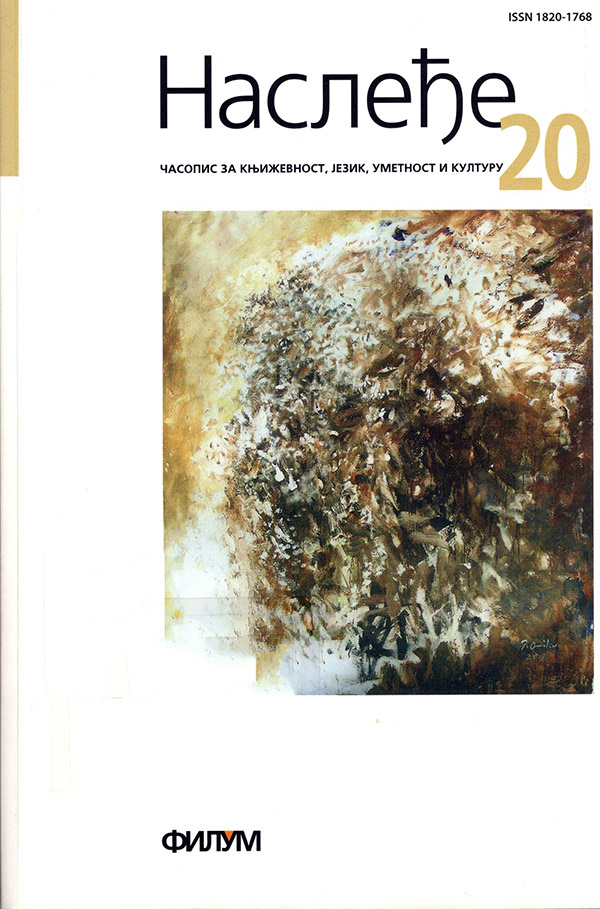TESTING LISTENING IN THE INTERNET-BASED TEST OF ENGLISH AS A FOREIGN LANGUAGE
Keywords:
construct, language skills, listening comprehension, test question format, TOEFL iBTAbstract
In this paper, the Listening section of the Internet-based Test of English as a Foreign Language is analyzed. Based on theoretical attempts to define a construct of listening and on the statement of purpose provided in the ETS’s publications, the intention of this paper is to identify the construct, or in other words the abilities necessary for comprehend and analyze an utterance. TOEFL iBT measures a test taker’s ability to understand the English language as is heard in an academic setting, thus providing evidence of their ability to understand and participate in lectures and conversations. Therefore, this paper identifies three purposes for academic listening: listening for basic comprehension, listening for pragmatic understanding, and listening for connecting and synthesizing information. Based on these three purposes, there are identified skills and abilities which are constituent part of the construct, which is then operationalized by input materials and test tasks in a language test. The step of test operationalization involves selecting audio materials and formulating test tasks, which in the case of TOEFL iBT take the form of a selected response. Finally, there are certain limitations identified, which are inherent to assessing language skills, as well as to assessing language through computer technology. However, despite the limitations, it is emphasized that assessing listening represents an important segment of overall language assessment, because listening is essential feature of communication. A wider implication of this paper refers to the insight Serbian test developers may benefit from when attempting to develop a test of listening in entrance or any other type of language exams.
References
Alderson 2009: C. J. Alderson, Test review: Test of English as a Foreign Language TM: Internet-based Test (TOEFL iBT®). Language Testing, 26 (4), 621-631.
Alderson 2000: C. J. Alderson, Assessing reading. Cambridge: Cambridge University Press.
Bachman 1990: F. L. Bachman, Fundamental considerations in language testing. Oxford: Oxford University Press.
Bachman, Palmer 1996: F. L. Bachman, S. A. Palmer, Language testing in practice. Oxford: Oxford University Press.
Barron’s TOEFL i-BT Test preparation with CD, (2008)
Buck 2001: G. Buck, Assessing listening. Cambridge: Cambridge University Press.
Chapelle 2001: A. C. Chapelle, Computer applications in second language acquisition: Foundations for teaching, testing and research. Cambridge: Cambridge University Press.
Chapelle 2006: C. Chapelle, D. Douglas, Assessing language through computer technology. Cambridge: Cambridge University Press.
: Council of Europe, Common European Framework of Reference: Learning, teaching, assessment. Cambridge: Cambridge University Press.
Douglas 2000: D D. ouglas, Assessing languages for specific purposes. Cambridge: Cambridge University Press.
ETS 2006: TOEFL iBT: Sample Questions. Available at http://languagetesting. info/articles/artlt.html. Last accessed January 11, 2011.
ETS 2007: TOEFL iBT tips. How to prepare for the TOEFL iBT. Available at http://www.ets.org/Media/Tests/TOEFL/pdf/TOEFL_Tips.pdf. Last accessed August 11, 2010.
Jamieson 2000: J. Jamieson, S. Jones, I. Kirsch, P. Mosenthal, C. Taylor, TOEFL 2000 Framework: A Working Paper Educational Testing Service, Princeton NJ.
Messick 1989: S. Messick, Validity. In R.L. Linn (ed.), Educational Measurement, 3rd edn. (pp. 13-103). NY: Macmillan.
Milanović 2010: M. Milanović, Test Task Characteristics in Computer-assisted (Internet-Based) English Language tests of Reading and Listening: TOEFL
i-BT, (unpublished master’s thesis)
North 1998: B. North, G. Schneider, Scaling descriptors for language proficiency scales. Language Testing, 15 (2), 217-262.
Powers 2010: E. D. Powers, The case for a comprehensive, four-skills assessment of English-language proficiency R&D Connections 14. Princeton, NJ: Educational Testing Service.
Wall, Horak 2006: D. Wall, T. Horak, The impact of changes in the TOEFL examination on teaching and learning in central and eastern Europe. Phase 1: The baseline study. TOEFL Monograph No. MS-34. Princeton, NJ: Educational Testing Service.
Wall, Horak 2008: D. Wall, T. Horak, The impact of changes in the TOEFL examination on teaching and learning in central and eastern Europe. Phase 2: Coping with change. TOEFL Monograph No. iBT-05. Princeton, NJ: Educational Testing Service.
http://www.toefl.org. Accessed on 13 January, 2011.






